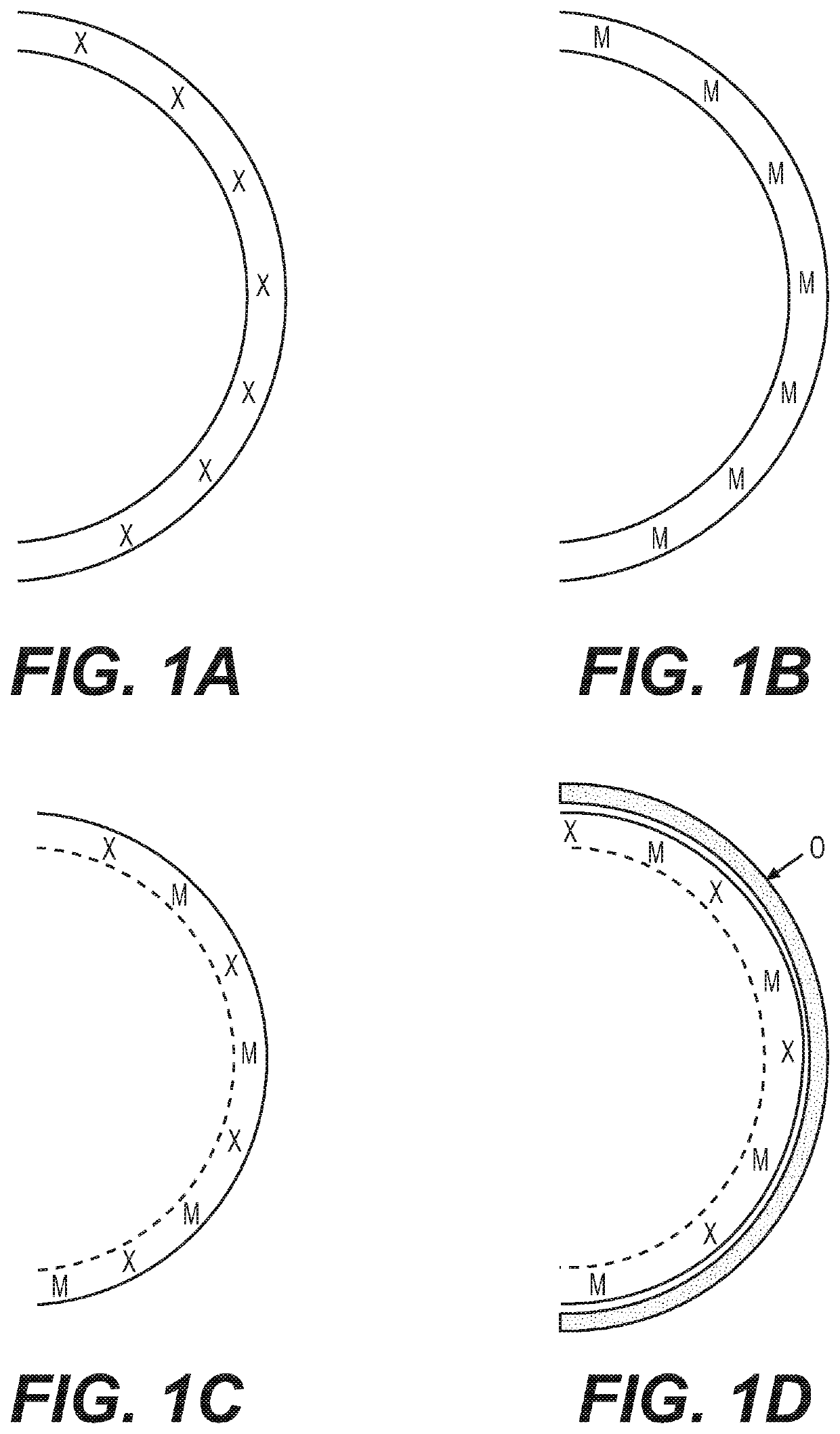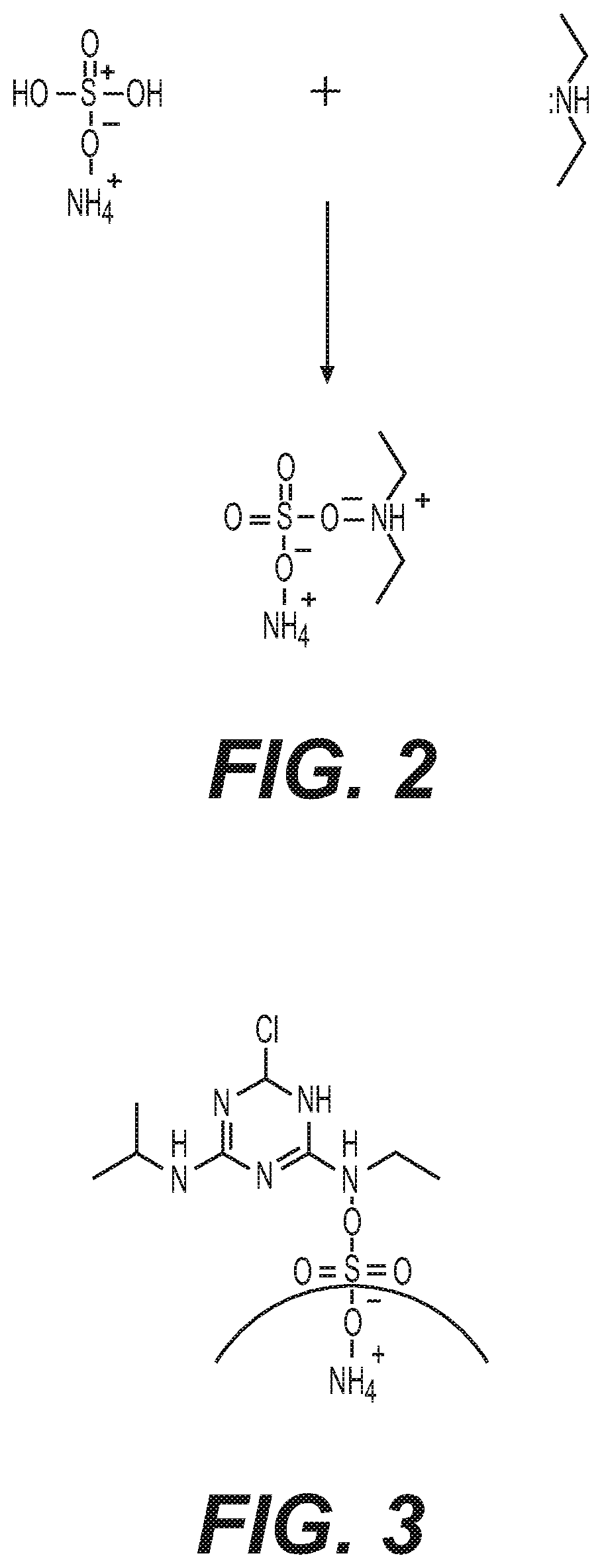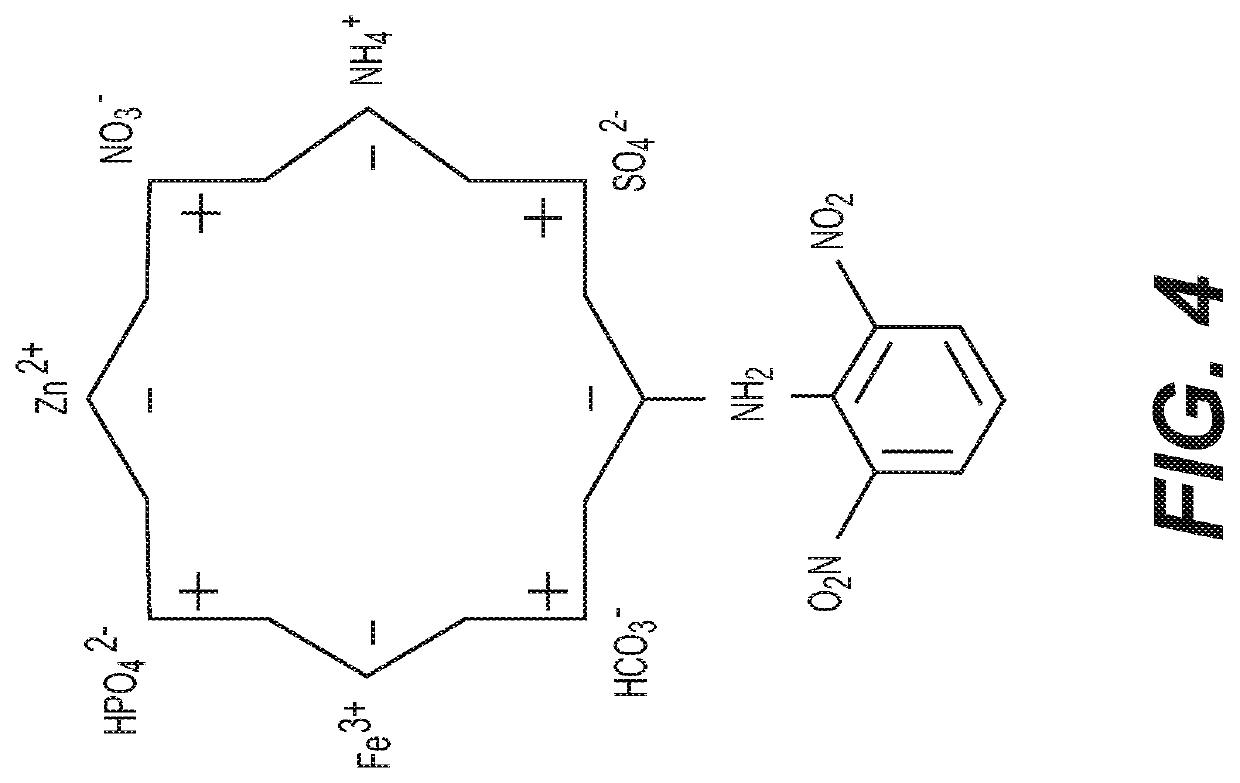Delivery of Bioactive Molecules in Coatings or Surface Layers of Organically Enhanced Inorganic Fertilizers
a bioactive molecule and organically enhanced technology, applied in the field of organically enhanced inorganic fertilizers, can solve the problems of harmful or unwanted substances in the soil, high cost of coatings, and high cost of fertilizer materials to apply, so as to facilitate the adhesion of coatings, reduce dust formation, and increase hardness and/or crush strength
- Summary
- Abstract
- Description
- Claims
- Application Information
AI Technical Summary
Benefits of technology
Problems solved by technology
Method used
Image
Examples
example 1
[0043]For an amide-based coating, the material is an amide composed of a fatty acid esterified to a C18 stearyl amine. The fatty acid may be of different carbon lengths, optimally at C12 or C14 carbons, but more preferably at C16 or C18 carbons. This amide is solid at ambient temperatures below 52° C. (125° F.). In an embodiment using this amide compound, the coating will permit some binding of the amide with the active group on the bioactive molecule. The primary binding occurs between the bioactive molecule and the sulfate components both on the surface of and within the outer 100 μm of the granule. The bioactive substance (e.g., herbicide and / or pesticide) also binds with organics or matrix containing negative charges that are in the granule core as the herbicide or pesticide migrates from the coating into the granule surface and core structure. The bioactive molecule also binds with iron and aluminum molecules that are also on the granule surface and core structure.
[0044]Coating...
example 2
[0048]Wet community waste organics comprised of digested food waste and manures (also referred to as biosolids) are received at a fertilizer manufacturing facility with a percent solids of about 17.0 percent. The plant is set up to operate at an organics processing rate of 220 wet tons per day. In this example, the material is mixed with previously dried organic materials to yield a preferred percent solids of about 20% to 26%, or more preferably about 22% to 24% solids. This conditioned organic mix is pumped into the first vessel for hydrolysis. At the orifice of the first vessel, the conditioned organic mix is further mixed with 93% sulfuric acid in an amount pre-calculated to yield a degree of heat of hydration of about 110° C. (230° F.) and a total of about 17% sulfur in the finished fertilizer. The contents of the vessel are mixed vigorously at a rate of 360 RPM for between about 30 seconds and ten minutes or, preferably for between about two minutes and six minutes. Within the...
example 3
[0050]In granules formed as in Examples 1 and 2, a coating is applied containing the herbicide 2,4-D, is applied as lipid soluble herbicide in a refined paraffin wax that has a melting point of about 131° F. (55° C.). Again between 5 and 30 pounds of coating per ton of product are used. The 2,4-D again binds to the sulfur and organic molecules on the surface of the granule and in the outer 100 μm of the granule. This binding increases over time as the 2,4-D in the solidified wax coating migrates to the surface of the granule and finds more sulfate to ionically bind to. The concentration of the 2,4-D in the finished fertilizer is usually between 0.05% and 0.5% as based on agronomist recommendations.
PUM
| Property | Measurement | Unit |
|---|---|---|
| depth | aaaaa | aaaaa |
| temperatures | aaaaa | aaaaa |
| temperatures | aaaaa | aaaaa |
Abstract
Description
Claims
Application Information
 Login to View More
Login to View More - R&D
- Intellectual Property
- Life Sciences
- Materials
- Tech Scout
- Unparalleled Data Quality
- Higher Quality Content
- 60% Fewer Hallucinations
Browse by: Latest US Patents, China's latest patents, Technical Efficacy Thesaurus, Application Domain, Technology Topic, Popular Technical Reports.
© 2025 PatSnap. All rights reserved.Legal|Privacy policy|Modern Slavery Act Transparency Statement|Sitemap|About US| Contact US: help@patsnap.com



